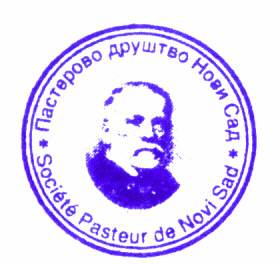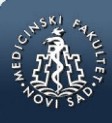md-medicaldata
Main menu:
- Naslovna/Home
- Arhiva/Archive
- Godina 2024, Broj 1
- Godina 2023, Broj 3
- Godina 2023, Broj 1-2
- Godina 2022, Broj 3
- Godina 2022, Broj 1-2
- Godina 2021, Broj 3-4
- Godina 2021, Broj 2
- Godina 2021, Broj 1
- Godina 2020, Broj 4
- Godina 2020, Broj 3
- Godina 2020, Broj 2
- Godina 2020, Broj 1
- Godina 2019, Broj 3
- Godina 2019, Broj 2
- Godina 2019, Broj 1
- Godina 2018, Broj 4
- Godina 2018, Broj 3
- Godina 2018, Broj 2
- Godina 2018, Broj 1
- Godina 2017, Broj 4
- Godina 2017, Broj 3
- Godina 2017, Broj 2
- Godina 2017, Broj 1
- Godina 2016, Broj 4
- Godina 2016, Broj 3
- Godina 2016, Broj 2
- Godina 2016, Broj 1
- Godina 2015, Broj 4
- Godina 2015, Broj 3
- Godina 2015, Broj 2
- Godina 2015, Broj 1
- Godina 2014, Broj 4
- Godina 2014, Broj 3
- Godina 2014, Broj 2
- Godina 2014, Broj 1
- Godina 2013, Broj 4
- Godina 2013, Broj 3
- Godina 2013, Broj 2
- Godina 2013, Broj 1
- Godina 2012, Broj 4
- Godina 2012, Broj 3
- Godina 2012, Broj 2
- Godina 2012, Broj 1
- Godina 2011, Broj 4
- Godina 2011, Broj 3
- Godina 2011, Broj 2
- Godina 2011, Broj 1
- Godina 2010, Broj 4
- Godina 2010, Broj 3
- Godina 2010, Broj 2
- Godina 2010, Broj 1
- Godina 2009, Broj 4
- Godina 2009, Broj 3
- Godina 2009, Broj 2
- Godina 2009, Broj 1
- Supplement
- Galerija/Gallery
- Dešavanja/Events
- Uputstva/Instructions
- Redakcija/Redaction
- Izdavač/Publisher
- Pretplata /Subscriptions
- Saradnja/Cooperation
- Vesti/News
- Kontakt/Contact
 Pasterovo društvo
Pasterovo društvo
- Disclosure of Potential Conflicts of Interest
- WorldMedical Association Declaration of Helsinki Ethical Principles for Medical Research Involving Human Subjects
- Committee on publication Ethics
CIP - Каталогизација у публикацији
Народна библиотека Србије, Београд
61
MD : Medical Data : medicinska revija = medical review / glavni i odgovorni urednik Dušan Lalošević. - Vol. 1, no. 1 (2009)- . - Zemun : Udruženje za kulturu povezivanja Most Art Jugoslavija ; Novi Sad : Pasterovo društvo, 2009- (Beograd : Scripta Internacional). - 30 cm
Dostupno i na: http://www.md-medicaldata.com. - Tri puta godišnje.
ISSN 1821-1585 = MD. Medical Data
COBISS.SR-ID 158558988
PATOHISTOLOŠKA I SEROLOŠKA DIJAGNOZA U PLUĆNIM OBLICIMA BOLESTI IZAZVANIH GLJIVICAMA IZ RODA ASPERGILLUS/
HISTOPATHOLOGICAL AND SEROLOGICAL DIAGNOSIS OF LUNG DISEASES CAUSED BY ASPERGILLUS SPP.
Authors
Aleksandra Lovrenski1,2, Dragana Tegeltija1,2, Željka Vrekić3, Bojana Andrejić Višnjić4, Siniša Maksimović2, Anika Považan2,5
1Univerzitet u Novom Sadu, Medicinski fakultet, Katedra za patologiju
2Institut za plućne bolesti Vojvodine, Sremska Kamenica, Srbija
3Centar za potologiju i histologiju, Klinički centar Vojvodine, Novi Sad, Srbija
4Univerzitet u Novom Sadu, Medicinski fakultet, Katedra za histologiju i embriologiju
5Univerzitet u Novom Sadu, Medicinski fakultet, Katedra za mikrobiologiju i imunologiju
UDK: 616.24-002.828
The paper was received / Rad primljen: 12.12.2018.
Accepted / Rad prihvaćen: 27.12.2018
Correspondence to:
Aleksandra Lovrenski, MD, PhD, Assistant Professor
Department for Pathology, Institute for pulmonary diseases of Vojvodina
Put doktora Goldmana 4,
21204 Sremska Kamenica, Serbia
Mobile phone: +381 66 880 5321
e-mail: aleksandra.lovrenski@mf.uns.ac.rs
Sažetak
Uvod: Gljvice iz roda Aspergillus mogu da izazovu čitav spektar plućnih bolesti u zavisnosti od stanja imuniteta i postojećih plućnih oboljenja. Iako patohistološka dijagnostika predstavlja zlatni standard za postavljanje definitivne dijagnoze aspergiloze, prednost imaju serološke metode usled njihove manje invazivnosti i povoljnijeg profila komplikacija i kontraindikacija. Cilj: Cilj rada je bio da se utvrdi povezanost patohistološke i serološke dijagnoze kod pacijenata sa aspergilozom pluća lečenih u Institutu za plućne bolesti Vojvodine. Materijal i metode: Retrospektivno ispitivanje obuhvatilo je 33 pacijenata kod kojih je u periodu od juna 2012. do juna 2017. godine, na Institutu za plućne bolesti Vojvodine patohistološki i serološki dokazana aspergiloza pluća. Materijal za patohistološku i serološku analizu obrađen je u Centru za patologiju i Centru za mikrobiologiju, virusologiju i imunologiju Instituta. Rezultati: Od ukupno 33 pacijenta, aspergilom je dijagnostikovan kod 28 (85%) pacijenata, kod 2 (6%) pacijenta HNPA, IPA kod 2 (6%), a kod jednog (3%) ABPA. Najčešći komorbiditeti su bili: tuberkuloza kod 16 (49%) pacijenata, zatim karcinom pluća kod 7 (21%) pacijenata, bronhiektazije kod 5 (15%), HOBP kod 3 (9%) i akutna leukemija kod 2 (6%) pacijenta. Galaktomanan je bio pozitivan kod 20 (60%), a negativan kod 13 (40%). Vrednosti antitela su kod 30 (91%) pacijenata bile pozitivne, a kod 3 (9%) bile negativne. Zaključak: Patohistološka dijagnostika predstavlja jedini način za postavljanje definitivne dijagnoze aspergiloze, ali zbog invazivnosti, kontraindikacija i komplikacija, kao prva stepenica u postavljanju dijagnoze treba da se koriste serološka ispitivanja.
Ključne reči:
Aspergillus, galaktomanan, antitela, serološka dijagnostika, patohistološka dijagnostika.
Abstract
Introduction: Aspergillus spp. can cause a wide range of lung diseases, depending on the current state of immunity and the existing pulmonary diseases. Although histopathological diagnostics is a gold standard for setting a definite diagnosis of aspergillosis, serological methods are preferred because of their less invasiveness and more favorable profile of complication and contraindications. Goal: The objective of this study was to determine the relation of pathohistological and serological diagnosis of patients with aspergillosis. Material and Methods: This retrospective study included 33 patients with lung aspergillosis diagnosed at the Institute for Pulmonary Diseases of Vojvodina from June 2012 until June 2017 The material for pathohistological and serological analysis was processed at the Centre for Pathology and Center for Microbiology, Virology and Immunology of the Institute. Results: From total of 33 patients, aspergilloma was diagnosed at 28 (85%) patients, 2 (6%) patients had CNPA, 2 (6%) patient had IPA and one (3%) was diagnosed with ABPA.The most common comorbidities were: tuberculosis in 16 (49%) patients, lung carcinoma in 7 (21%) patients, bronchiectasis in 5 (15%), HOBP in 3 (9%) and acute leukemia in 2 (6%) patients. Galactomannan was positive in 20 (60%) and negative in 13 (40%). The antibody values were positive in 30 (91%) patients, and 3 (9%) were negative. Conclusion: Histopathological examination is the only way to set a definite diagnosis of aspergillosis, but due to invasiveness, contraindications and complications, serological tests should be used as the first step in diagnosis.
Key words:
Aspergillus; galactomannan; antibody; serological diagnostics; histopathological diagnostics.
References:
- Soubani AO, Chandrasekar PH. The Clinical Spectrum of Pulmonary Aspergillosis. Chest. 2002; 121:1988-99.
- Denning DW. Chronic forms of pulmonary aspergillosis. Clin Microbiol Infect. 2001;7 Suppl 2:25–31.
- Parra I, Remacha A, Rezusta A, et al. Chronic necrotizing pulmonary aspergillosis. Med Mycol. 2004; 42:369–71.
- Latge J. Aspergillus fumigatus and aspergillosis. Clin Micro Rev. 1999; 12:310-50.
- Guinea J, Bouza E. Current challenges in the microbiological diagnosisof invasive aspergillosis. Mycopathologia. 2014;178:403–16.
- Yamakami Y, Hashimoto A, Yamagata E, Kamberi P, Karashima R, Nagai H et al. Evaluation of PCR for Detection of DNA Specific for Aspergillus Species in Sera of Patients with Various Forms of Pulmonary Aspergillosis. Journal of Clinical Microbiology. 1998;36(12):3619-3623.
- Dagenais TRT, Keller NP. Pathogenesis of Aspergillus fumigatus in invasive aspergillosis. Clin Microbiol Rev. 2009; 3(22):447–65.
- De Pauw B, Walsh T, Donnelly P, Stevens DA, Edwards JE, Calandra T, et al. Revised definitions of invasive fungal disease from the European organization for research and treatment of cancer/Invasive fungal infections cooperative group and the National institute of allergy and Infectious diseases mycoses study group (EORTC/MSG) consensus group (2008). Clin Infect Dis. 2008; 46:1813-21
- Kousha M, Tadi R, Soubani AO. Pulmonary aspergillosis: a clinical review. Eur Respir Rev. 2011;20(121):156-74.
- Mennink-Kersten MA, Donnelly JP, Verweij PE. Detection of circulating galactomannan for the diagnosis and management of invasive aspergillosis. Lancet Infect Dis 2004; 4:349.
- Mattei D, Rapezzi D, Mordini N, Cuda F, Nigro CL, Musso M et al. False-positive Aspergillus galactomannan enzyme-linked immunosorbent assay results in vivo during amoxicillin-clavulanic acid treatment. J Clin Microbiol 2004; 42:5362.
- Walsh TJ, Shoham S, Petraitiene R, Sein T, Schaufele R, Kelaher A et al. Detection of galactomannan antigenemia in patients receiving piperacillin-tazobactam and correlations between in vitro, in vivo, and clinical properties of the drug-antigen interaction. J Clin Microbiol 2004; 42:4744.
- Huang YT, Hung CC, Hsueh PR. Aspergillus galactomannan antigenemia in penicilliosis marneffei. AIDS 2007; 21:1990.
- Ratkov E, Vidović A, Minić P, Janić D, Šipetić-Grujičić S, Džamić A et al. Nalaz laboratorijskih biomarkera kod hematoloških i pulmoloških bolesnika s visokim rizikom za aspergilozu. Srp Arh Celok Lek. 2012; 140(5-6):290-8.
- Taccone FS, Abeele AM, Bulpa P, Misset B, Meersseman W, Cardos T et al. Epidemiology of invasive aspergillosis in critically ill patients: clinical presentation, underlying conditions, and outcomes. Crit Care. 2015; 19(1): 7.
- Lin SJ, Schranz J, Teutsch SM. Clinical Infectious Diseases. 2001 Feb 1; 32(3):358-66.
- Powers-Fletcher MV, Hanson KE. Molecular diagnostic testing for Aspergillus. J Clin Microbiol. 2016;54(11):2655-60.
PDF Lovrenski A. et al. • MD-Medical Data 2018;10(4): 191-196
 Medicinski fakultet
Medicinski fakultet